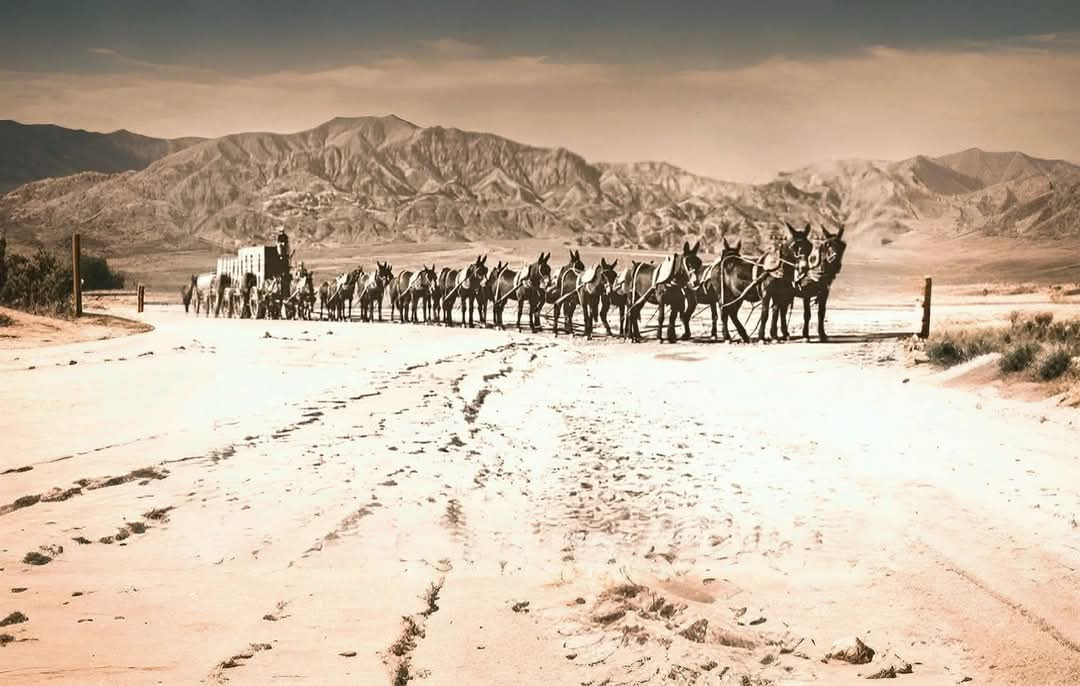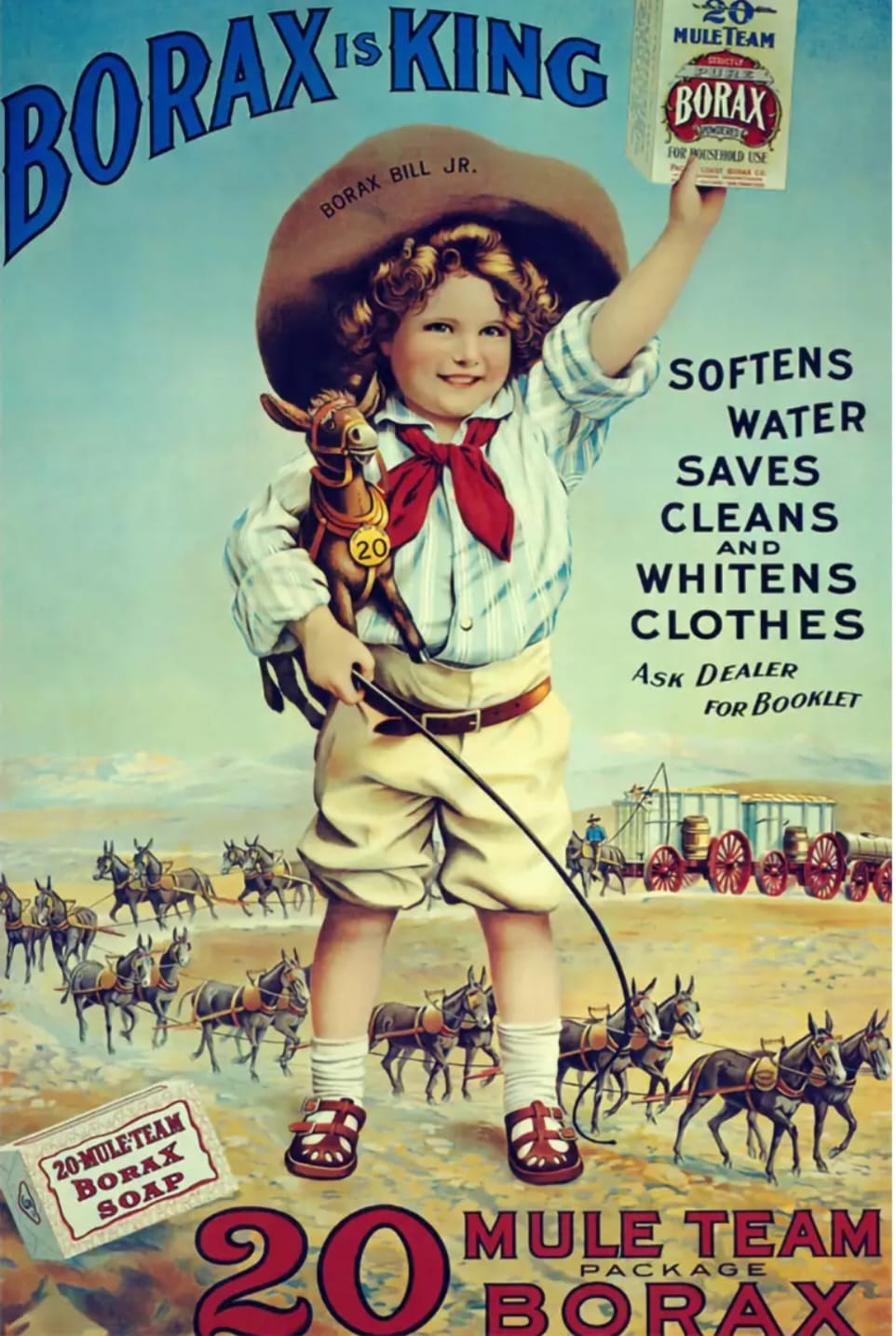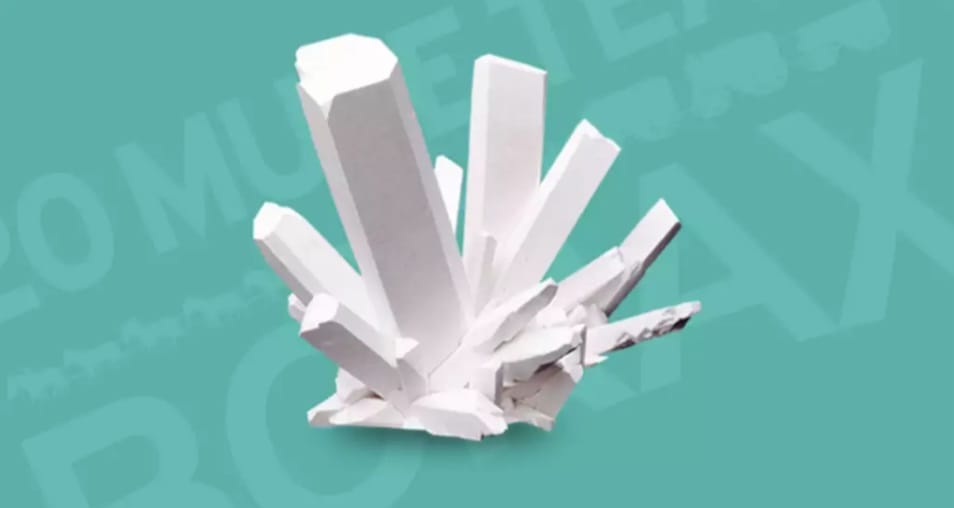Into-the-West • 20 Mule Team's Death Valley Days
The Duke Speaks ☆ Doug "Duke" Parker Perpetuating the values of true Americana, and the memory of John Wayne.
"Between 1883 and 1889, a 20-mule team made the arduous 165-mile journey out of Death Valley and across the dessert to the railhead in Mojave, California, hauling 10 short tons of sodium borate per trip.

The wagons' rear wheels, towering at seven feet, and were reinforced with 1-inch-thick iron tires. The solid oak wagon beds measured 16 feet in length and 6 feet in depth, with an empty weight of 7,800 pounds. The entire convoy stretched over 180 feet, comprising of three wagons: the first acted as a trailer, the second was the "tender" or "back action," and the last served as the water wagon.
When fully loaded, the mule train weighed around 73,200 pounds. The water tank, which held 1,200 US gallons, provided the mules with the necessary water to sustain them throughout the journey. During the summer months, an additional 500-gallon water wagon was added for dry camps along the route.
Over six years, the 20-mule teams successfully transported more than 20 million pounds (10,000 tons) of borax out of Death Valley.
There were two horses that also made up the team. They were closest to the wagon, known as wheelers, and were ridden by one of the two teamsters required to operate the wagons. Though larger than the mules, the horses were less intelligent and less adapted to the harsh desert conditions. Mules, on the other hand, were favored for desert freighting, as described in Remi Nadeau's Nadeau's Freighting Teams in the Mojave.
The teamster controlled the mules using a single long rein, known as a "jerk line," and a blacksnake whip. He usually rode the left wheeler but could also manage the team from the trailer seat, especially when navigating steep descents. The swamper, who typically rode on the trailer, operated the brake on hilly terrain. Armed with a can of small rocks, the swamper could nudge any sluggish mules back to work.
Both men were responsible for preparing the team, taking care of the mules' needs, and addressing any repairs or veterinary issues. During midday breaks, the mules were fed and watered while still harnessed, while night stops included corrals and feed boxes.
Each day's journey averaged about 17 miles, with the entire one-way trip taking around ten days. Cabins were built along the way for overnight stops for the teamsters and swampers to rest.
In 1894, a steam engine named "Dinah" was brought in to replace the mules. However, Dinah proved to be no match for durability and dependability of the epic 20 mule team's power. She broke down and was towed back to town by the very mules she tried to replace.
And yes, ladies and gentlemen, this is where the brand known to this day as - 20 Mule Team Borax - began its humble origins."
The Duke Speaks ☆ Doug "Duke" Parker Perpetuating the values of true Americana, and the memory of John Wayne.
https://www.facebook.com/share/1YbtPuViJG ___________________________________
THE BORAX STORY

Borax is a compound made from the naturally occurring mineral Boron which has been used for a variety of purposes by humans across the globe.
After being traded along the Silk Road for 500 years, Borax was discovered in Death Valley during the 1880s, and Borax magnate F.M. “Borax” Smith was quick to capitalize on the opportunity.
Soon he had the iconic 20 Mule Wagon Teams hauling tons of Borax out of the desert to be used in thousands of products. Before long, Borax began showing up on shelves across the United States and the “Borax Boom” had begun.
Since it is a mineral in its base form, the compound Borax is technically called Sodium Borate (or Sodium Tetraborate) and is a simple molecule.
More Facts About Borax At:
https://www.20muleteamlaundry.com/about.html
Boron

This element is how Borax got the first half of its name. Boron is used for industrial purposes to strengthen carbon fibers, and it helps to make fiberglass.
Aah, the sweet, sweet smell of mule sweat and leather in all kinds of weather with dinner, tis naught but the life of blues for an ol' muleskinner 😁
"Mule Skinner Blues" (a.k.a. "Blue Yodel #8", "Muleskinner Blues", and "Muleskinner's Blues") is a classic country song written by Jimmie Rodgers. The song was first recorded by Rodgers in 1930 and has been recorded by many artists since then, acquiring the de facto title "Mule Skinner Blues" after Rodgers named it "Blue Yodel #8" (one of his Blue Yodels).
https://youtu.be/SQ0ppOZ967k?si=3uUhcggVMT6tWGKd
"Mule Skinner Blues" (a.k.a. "Blue Yodel #8", "Muleskinner Blues", and "Muleskinner's Blues") is a classic country song written by Jimmie Rodgers.
The song was first recorded by Rodgers in 1930 and has been recorded by many artists since then, acquiring the de facto title "Mule Skinner Blues" after Rodgers named it "Blue Yodel #8" (one of his Blue Yodels).
Good morning captain Good morning shine Do you need another muleskinner Out on your new mud line
Yodel
I like to work I'm rolling all the time I can pop my initials On a mule's behind
Yodel
Hey little water boy Bring that water round If you don't like your job Set that water bucket down
Yodel
Workin' on the good road Dollar and a half a day My good girl's waiting on a Saturday night Just to draw my pay
Guitar
I'm going to town, honey What you want me to bring you back? Bring a pint of booze And a John B Stetson hat
YodelI smell your bread a-burning Turn your damper down If you ain't got a damper, good gal Turn your bread around
Yodel
Building THE NEW 20 MULE TEAM BORAX WAGONS Commissioned by the Death Valley Conservancy,
This is the only, and most intensive series that shows the complete building process of the new Death Valley 20 Mule Team Borax wagons.
Commissioned by the Death Valley Conservancy, this is the first time these wagons have been built since the 1880s.
From rough white oak blocks to the first hitching of the 20 mules of Bobby Tanner, this series gives you the feel of wagons as they were built 130 years ago.
☆ Into-the-West by Vincent Easley II ▪︎ Real Liberty Media: comparing history to the events of today for an expectation of the future, for our world and mankind as a whole.
Under Section 107 of the Copyright Act 1976, allowance is made for “fair use” for purposes such as criticism, comment, news reporting, teaching, scholarship, and research. ☆
